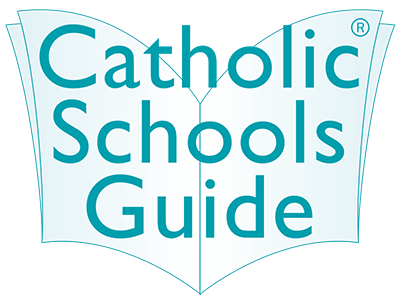News and Media

Technology & its Impact on Education by Professor Geoff Romeo
In Education there is still confusion, at all levels and across all countries, about why technology matters and there is a widespread reluctance to move away from tried and tested teaching methods and practices. Consequently, there is tokenistic use of digital technologies and doubts about the efficacy of computers to enhance teaching and learning linger. Why? Surely we can be confident that our research and accumulated wisdom provides the answers we seek. Unfortunately, like most things in life, it is not straightforward.
Much is written about the promise of technology and how it is changing our lives; there is great curiosity and expectation that it will transform/is transforming, the way we learn. However, how this will happen/is happening is not quite clear and is often contested. Popular culture suggests that we will get to the point where we can be programmed like a computer. In The Matrix, Trinity needs to learn how to fly a helicopter to rescue Neo. This is a simple matter of finding the right computer program that can be uploaded to Trinity’s brain via a convenient USB port that she has in the back of her head – the Sci-Fi perspective.
A techno-romantic view engenders the idea that the sheer presence of technology in the classroom renews the education enterprise – learning becomes easier, teaching more dynamic, and school more alluring. All that seems to be required is to get the wires, boxes and screens in place and educational reform will be a no-brainer.
For some, the future belongs to the e-teacher and the e-learner. Spender and Stewart suggest that the teacher won’t be the talking head at the front of the class. Teachers will be as adept with technology as they are with books and they will use new technologies to empower and engage learners. Technology will be infused with the learning process to create knowledge products, ‘one size fits all’ curricula will become redundant, and digital repositories and learning objects will become the new tools of the teaching profession – a networked learning view.
These perspectives tend to ignore the complex and protracted nature of human learning and often generate unrealistic expectations. For many teachers and learners the promised synergy between technology and learning is proving to be as elusive as ever.
There are others who believe that the gadgets won’t make any difference whatsoever. Technology will eventually allow learners to access the world’s experts on any given topic, but the experts won’t have time to respond, and tele-presence, when it arrives, won’t take over, children will still physically go to school – touch and general proximity will still matter, and children won’t learn to reason, make better judgments, become better citizens because of technology – they will still need good adult role models – a curmudgeon’s point of view.
Does research support the idea that technology improves teaching and learning? There is now a reasonably well-established body of research on the efficacy of technology in education pointing to improved outcomes for a range of learners, and it represents a case for concluding that the introduction of technology into education can improve learning.
What instructional strategies should teachers adopt? This is not an easy question to answer. Many argue that the ideal instructional environment for 21st century learners is underpinned by the ideas of constructivism and built on the knowledge accrued over decades of research, of how people learn. Constructivism is a psychological and philosophical perspective contending that individuals construct much of what they learn and understand. A basic principle is that people are active learners, build knowledge for themselves, and that the interactions between people and situations are very important to the learning process.
This is often packaged as engaged or transformative learning. The role of technology in engaged or transformative learning, according to Brown, Bransford et al, is to bring exciting, real-world problems into the classroom, provide scaffolds and tools to enhance learning, to give students and teachers more opportunities for feedback, reflection, and revision and to build local and global learning communities. This ‘technology as tool’ view is shared by many.
Others see the function of technology differently. Technology has become part of our culture and in a socio-cultural sense the cultural tools that we now have available to mediate learning are inextricably linked to, and shaped by, technology. New and emerging technologies will impact education in ways we have not yet imagined and this challenges us to consider the impact of technology on contemporary culture and its subsequent impact on learning, rather than thinking about how technology can facilitate a traditional view of learning.
It also challenges us to think about the way technologies have changed learning, not in a procedural sense, but in a psychological and cognitive sense. In turn, this then challenges the corpus of knowledge on how people learn and the theories sustaining it, and, the basic principles underpinning the design of effective teaching and learning environments.
We know that the instructional procedures and practices surrounding the use of technologies in schools and universities are many and varied. The rhetoric underpinning the pedagogy is mostly about constructivism presenting itself as engaged or transformative learning. In universities there are also interesting debates about the impact of the technology on teaching and learning in a psychological and cognitive sense. For school communities this presents an enigma; how do you make decisions about appropriate practice? It is incumbent on educational researchers to present research findings in ways that enable teachers to reflect on what happened in setting A and determine whether such action is appropriate for setting B. The role of the educator is to use research findings to make intelligent and pragmatic decisions about how to best organise the teaching and learning environment for the learners in their care. This is what good teachers do.

Professor Geoff Romeo is the Associate Dean, Learning and Teaching for the Faculty of Education at Australian Catholic University. Geoff has a keen interest in the use of ICT in Education and has conducted research into the development of instructional strategies for the integration of ICTs in the primary curriculum, the use of touch screen technology in the classroom, the use of ICTs in education, and the use and development of online learning applications in higher education. Geoff has written extensively on ICT in Education especially in primary and secondary schools and has also presented lectures, workshops and conference papers to audiences in Australia, US, UK, Denmark, Hungary, Singapore, South Africa, Chile, the United Arab Emirates and Qatar.
Geoff’s previous roles include providing specialist advice, research services, teaching and is currently leader of component three of the a $7.8 million national ‘Teaching Teachers for the Future’ project bid which aims to transform the delivery of teacher education in Australian universities. In 2010, he received the state and national award for ‘Outstanding Leadership in ICT in Education.’ He is the Editor of Australian Educational Computing, Fellow and board member of the Australian Council of Computers in Education and a past President of Information and Communication Technologies in Education, Victoria (ICTEV).Text for this article is drawn from various papers available at: acu-au.academia.edu/GeoffRomeo

